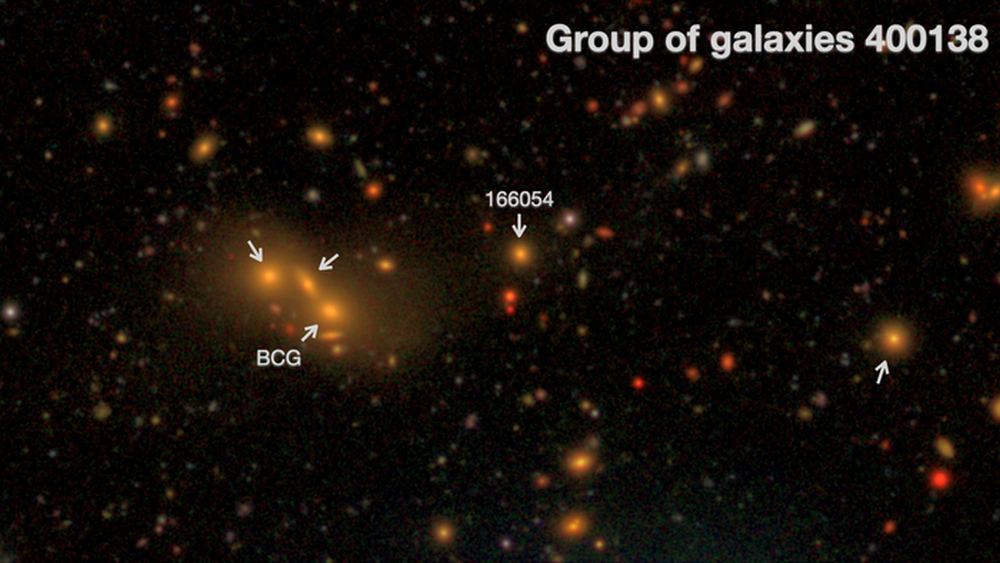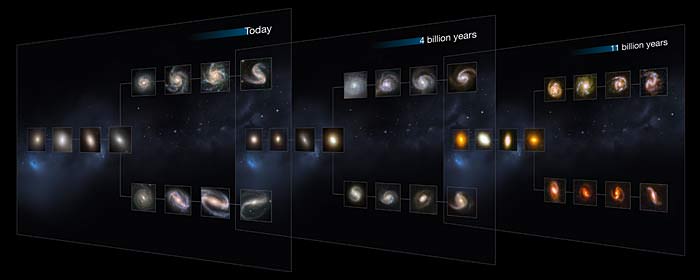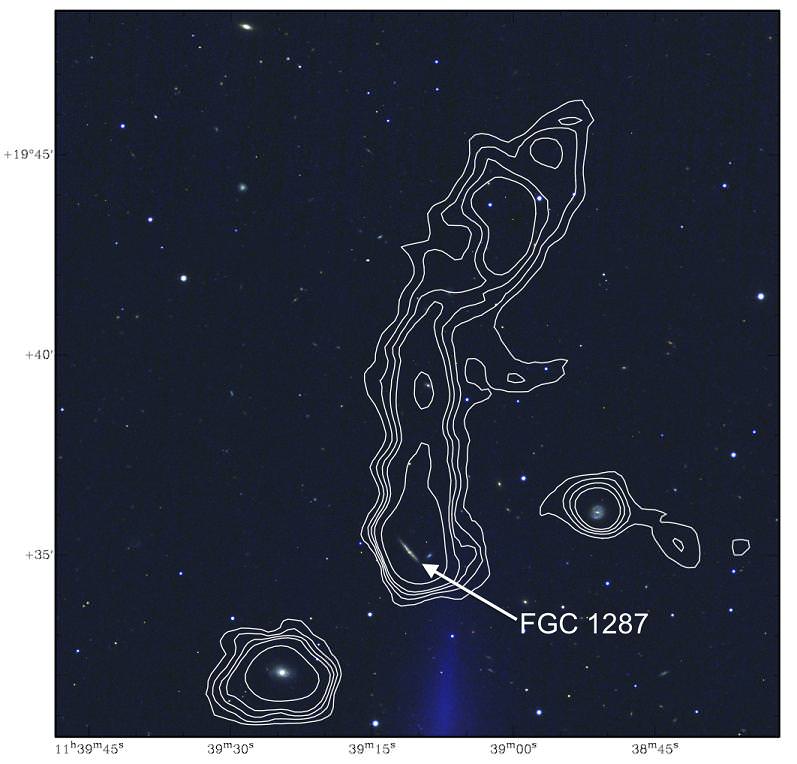What we’re gonna’ do here is go back. Way back into time. Back to when the only thing that existed was… galaxies? When astronomers employed the power of Hubble’s CANDELS survey to observe different galaxy types from the distant past, they expected to see a variety of spiral, elliptical, lenticular and peculiar structures, but what they didn’t expect was that things were a whole lot more “peculiar” a long time ago!
Known as the Hubble Sequence, astronomers use this classified system for listing galaxy sizes, shapes and colors. It also arranges galaxies according to their morphology and star-forming activity. Up to the present, the Hubble Sequence covered about 80% of the Universe’s history, but the latest information shows that the sequence was valid as much as 11 billion years ago! Out of what we currently know, there are two dominant galaxy types – spiral and elliptical – with the lenticular structure as a median. Of course, this is constrained to the regions of space which we can readily observe, but how true did the sequence hold back when the Universe theoretically began?
“This is a key question: when and over what timescale did the Hubble Sequence form?” says BoMee Lee of the University of Massachusetts, USA, lead author of a new paper exploring the sequence. “To do this you need to peer at distant galaxies and compare them to their closer relatives, to see if they too can be described in the same way.”
Using the Hubble Space Telescope, astronomers took on the sequence challenge to peer back 11 billion years in time to study galaxy structure. Up until now, researchers could confirm the sequence was valid as long ago as 8 billion years, but these new studies pushed CANDELS, the Cosmic Assembly Near-infrared Deep Extragalactic Legacy Survey, to the outer limits. It is simply the largest project ever, and soaked up 902 assigned orbits of observing time. Using the WFC3 and ACS cameras, the team examined structures that existed less than one billion years after the Big Bang. While earlier studies had aimed for lower-mass galaxies in this era, no study had really taken on serious observation of mature structures – ones similar to our own galaxy. Now the new CANDELS observations show us that all galaxies, regardless of size, fit into a totally different classification!
“This is the only comprehensive study to date of the visual appearance of the large, massive galaxies that existed so far back in time,” says co-author Arjen van der Wel of the Max Planck Institute for Astronomy in Heidelberg, Germany. “The galaxies look remarkably mature, which is not predicted by galaxy formation models to be the case that early on in the history of the Universe.”
Just what did this study see that’s so different? Just the power of two. Galaxies were either complex, with blue star forming regions and irregular structures, or they were like our nearby neighbors: massive red galaxies that exhibit no new star-formation. In the early Universe, galaxies like the Milky Way were uncommon. With so little to study, it was nearly impossible to get a large enough sample to sufficiently catalog their characteristics. Early research could only peer back in visible light, a format which emphasized star formation and revealed the red-shifted ultraviolet emission of the galaxies. This information was inconclusive because galaxy structure appeared disrupted and unlike the formations we see near to us. Through the use of infra-red, astronomers could observe the now red-shifted massive galaxies in their visible rest frame. Thanks to CANDELS lighting the way, astronomers were able to thoroughly sample a significantly larger amount of mature galaxies in detail.
“The huge CANDELS dataset was a great resource for us to use in order to consistently study ancient galaxies in the early Universe,” concludes Lee. “And the resolution and sensitivity of Hubble’s WFC3 is second to none in the infrared wavelengths needed to carry out this study. The Hubble Sequence underpins a lot of what we know about how galaxies form and evolve — finding it to be in place this far back is a significant discovery.”
Original Story Source: ” Hubble Explores the Origins of Modern Galaxies” – Hubble News Release.



